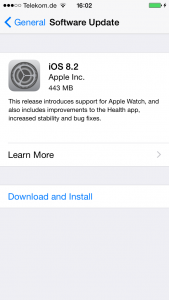And indeed, in order to avoid being again in the news, the OpenSSL Foundation is set to release later this week several patches for OpenSSL, fixing undisclosed security vulnerabilities, including one that has been rated “high” severity.
Matt Caswell of the OpenSSL Project Team announced that OpenSSL versions 1.0.2a, 1.0.1m, 1.0.0r, and 0.9.8zf will be released Thursday.
“These releases will be made available on 19th March,” Caswell wrote. “They will fix a number of security defects. The highest severity defect fixed by these releases is classified as “high” severity.”
OpenSSL has been hit hard and the trust in it and in open source in general has been severely shaken in the last 12 months.
Last year in April, Heartbleed (CVE-2014-0160) was discovered in older versions of OpenSSL, but still highly used, which allowed hackers to read the sensitive contents of users’ encrypted data, such as financial transactions, instant messages and even steal SSL keys from Internet servers or client software that were running the affected versions of OpenSSL.
Two month later, in June the same year, a Man-in-the-Middle (MITM) vulnerability (CVE-2014-0224) was discovered and fixed. However, the vulnerability wasn’t quite as severe as the Heartbleed flaw, but serious enough to decrypt, read or manipulate the encrypted data.
In October last year, POODLE (CVE-2014-3566) (Padding Oracle On Downgraded Legacy Encryption) was discovered in the obsolete Secure Sockets Layer (SSL) v3.0 that could allow an attacker to decrypt contents of encrypted connections to websites. When exploited, it allows an attacker to perform a man-in-the-middle attack in order to decrypt HTTP cookies. The POODLE attack can force a connection to “fallback” to SSL 3.0, where it is then possible to steal cookies, which are meant to store personal data, website preferences or even passwords.
Just weeks ago, the latest vulnerability, FREAK (CVE-2015-0204) (Factoring Attack on RSA-EXPORT Keys) was discovered in the SSL protocol that allowed an attacker to force SSL clients, including OpenSSL, to downgrade to weaken ciphers that can be easily broken. Needless to say that such a weak encryption could potentially allow them to eavesdrop on encrypted networks by conducting man-in-the-middle attacks. This time, pretty much every big software vendor was affected: Apple, with its MacOS, iPhone and iPad, Google with Android and Chrome and last but not least, Microsoft with all versions of Windows.
Due to its widespread use, OpenSSL is considered an important software project and is ranked first under the Linux Foundation’s Core Infrastructure Initiative. Because of its complexity, high usage and lack of in-depth security reviews, companies like Google, Facebook and Cisco are heavily sponsoring this project in order to avoid being again affected by long forgotten bugs.
Well, for OpenSSL seems that this is starting to pay off.
The post OpenSSL: Patch for secret “high severity” vulnerability appeared first on Avira Blog.

